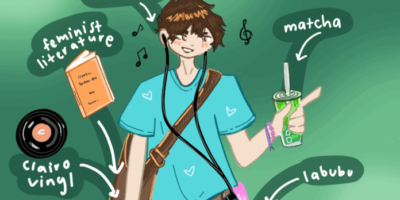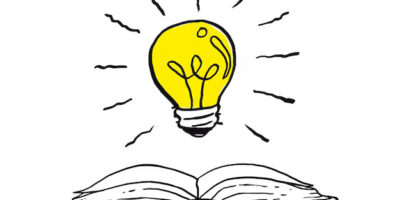This spring term, the Engineering Society has been incredibly successful in promoting their charitable program to purchase goats for rural Africans. It was so successful that they have decided to put some money toward other facets of the Adopt a Village program, which encompasses not only alternative income programs but also those for education, water access, and community health. Both initiatives are in support of the popular Canadian non-governmental organization Free the Children. The success of this fundraising goes a long way in highlighting the altruism and awareness of our engineering students. It is incredibly important that the livelihood of others is a concern that resides within us. After all, aren’t engineers supposed to be making the world a better place? There must be a place for this empathy beyond row-reductions, derivatives, and optimization and clearly the Waterloo engineering community is seeking this.
However, best intentions do not necessarily yield the best outcomes. In extending empathy beyond applied sciences, it can be forgotten that the societal systems that drive poverty are often more complex than the problems within engineering texts. The following is a critical reflection on Free the Children, as a relevant case study due to its selection by the Engineering Society for this term’s charity programs.
The Adopt a Village program embodies the model of Free the Children. Their mission states that, “sustainability and community ownership is the goal of all of Free the Children’s Adopt a Village projects.” The pillars of the program include education, clean water and sanitation, health, alternative income and livelihood, and agriculture and food security. These together comprise the organizational model, “many solutions that, together, get the job done.” While the intent is aimed in a sensible direction, it falls into contradiction with the means to create this change.
There have been decades of efforts directed towards the theme of giving. Giving, in the case of Free the Children, means “gifts” that help a community rise up from poverty and gives them ownership. This intent is noble and is aimed to share the accumulation of wealth in Canada and beyond. However, through review of the organization’s annual reports, online resources, and news articles, there is no evidence presented other than the volume of materials delivered to prove that change has been made. Poverty has remained entrenched as a norm around the world and billions in external aid has not proven to be the bottom line solution this issue. What absolutely must be realized is that giving is not a means to an end; it is much more complex. These are issues that no amount of goats, schools, hospitals, or wells will fix alone. There is no single, unique solution to poverty, or at least none that have been found to date. It is time that this is recognized, and the idea of easy fixes to poverty be discarded.
On the largest scale, countries experiencing poverty are often subject to international market forces, which actively discourage development. The largest economies in the world thrive based on trade protectionism and internal wealth generation. African countries are often required by international trade agreements to avoid economic practices that we know promote development by the Western countries who provide aid. A key example can be found in the agricultural industry. Countries like Canada and the U.S.A. provide monetary aid to African nations, while obligating them to purchase Western exports. The effect is that rural Africans often end up eating American rice while their own plots produce rice, which cannot meet the low prices of foreign, subsidized grains, which of course means they require more aid.
Wealth must be derived internally and not given to a community. Selections of items from a catalogue do not purchase a route out of poverty. A sudden burst of goats in a local region gives one family wealth while flooding the marketplace. A new schoolhouse needs not only competent teachers, but also those who are accountable to their pupils. The flow of water from a well only lasts as long as it can be kept operational.
The reinforcing loops that have given Canadians our advantage will take away that which we give as it has for decades past. It is these systems, the ones that enforce poverty and sustain demand for philanthropy, that must change. Billions of dollars have not yet proved the stimulus required to shift the balance and many more billions certainly cannot be expected to do any better. We must reassess our failing models and find ways to make a real shift in the balances that make extreme poverty as it is today. Perhaps financial wealth is not the only source of inequality and our burden in Canada is not just to redistribute what we have.
It is important to challenge the idea that “others” require our help at all. Africans are fully capable of generating their own solutions to poverty. In fact, the most successful instances of poverty reduction have stemmed from African solutions. To believe that Africans are in need of our ideas to fix their countries places Africans in a position of powerlessness and promotes Westerners to the position of saviours. This is clearly evident in the voluntourism phenomenon, a service Free the Children provides to some of its members. If there is one thing rural African villages do not lack, it is the capacity to provide labour. It is absurd to think that North Americans–many of whom are from cities and have never worked manually before–can provide any sort of effective labour in this situation. Further, do we know for certain that this approach can solve the problems of a people distinctly different than our own? Instead, stand in solidarity. Expect that Africans are able to solve their own problems and use fact-based decision making to discover the best way to support that reality. Free the Children has certainly taken steps in this direction with their aim to be sustainable and push for ownership, however it remains clear that their mission has not departed from its founding roots; that is, mobilizing North American youth leaders to deliver materials that can “be the change.”
The development sector has many alternative approaches using this solidarity concept that the Engineering Society and its donors may consider. For example, one development approach focuses on human rights, such as that of Oxfam Canada. They have put their focus into breaking the cycle of poverty through women’s rights, charging that no progress can be made in development until policies, laws and customs are changed. Another direction is through investment, chosen by groups such as Acumen and Kulemela Investments. They focus on providing investments to important social enterprises and agribusiness entrepreneurs, respectively, to provide the capital required to develop income and services that can drive progress internally. These examples (and more) focus on affecting the systems that underpin the cycle of poverty in an effort to grow a more stable and well-provided community from the basics of economics. While their metrics may be harder to assess, their missions more challenging to articulate to donors, and their efforts spanning longer terms to succeed, these NGOs create change with dignity, not dependence.
In light of these arguments, the efforts of the charity directors and donors should not be minimized. The point of promoting alternatives and criticizing decisions is to encourage a spirit of iteration and improvement. This is the spirit of the above NGOs; to approach a messy topic with admittance that there is no answer or complete package that they can offer to “solve poverty.” Instead, it is about taking challenging stances to push for a change in the status quo that traditional methods may never be able to unlock.




Anonymous
Fantastic article. Meaningful observations and wise words that eager donors should hear prior to their “throw money at it” behaviour.